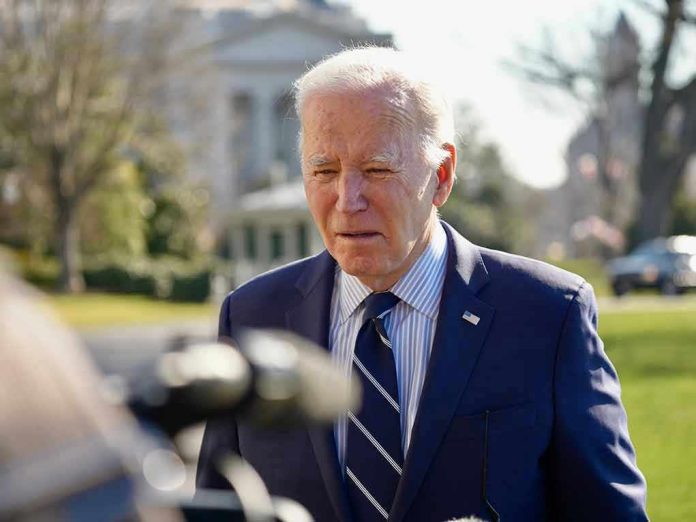
In a move that has left many questioning the integrity of his final presidential acts, Joe Biden’s use of an autopen to sign thousands of clemency documents has ignited a firestorm of criticism.
At a Glance
- Biden used an autopen for over 4,000 clemency actions during his presidency’s final days.
- Republicans question the legality and personal involvement of Biden in these decisions.
- Biden claims he set the criteria for clemency but critics argue this process lacks transparency.
- The New York Times faces backlash for its handling of Biden’s admissions in their coverage.
The Controversial Use of Autopen
In the waning days of his presidency, Joe Biden’s administration issued widespread clemency, notably using an autopen to sign over 4,000 documents. This method, while not without precedent, has never been used on such a scale for clemency actions. Critics have pounced on this revelation, questioning both the legality and the implications of Biden’s personal involvement – or lack thereof – in these decisions. The debate has highlighted concerns about the transparency and accountability of presidential actions.
The legality of using an autopen for presidential signatures is established, yet the notion that it was used for mass clemency decisions raises eyebrows. Former President Donald Trump and GOP lawmakers have spearheaded efforts to question Biden’s physical and mental capability to authorize these decisions personally. The scale and nature of these clemency actions have left a sour taste, with many feeling that the process was rushed and not thoroughly vetted.
Biden’s Defense and Media Criticism
In a rare interview with The New York Times, Biden attempted to quell the controversy by insisting that he personally approved all clemency decisions, albeit through setting broad eligibility criteria rather than case-by-case approvals. However, this admission has not satisfied his critics, who argue that such an approach reduces the seriousness and individual consideration such decisions typically warrant.
Critics have not only targeted Biden but also the media’s portrayal of these events. The New York Times, which finally secured an interview with Biden, has been lambasted for allegedly burying key admissions deep within their article. By the time readers reach the 32nd paragraph, the opportunity to appreciate the gravity of Biden’s statements might have been lost. Such editorial choices have spurred accusations of bias and misdirection, further fueling the controversy.
Political and Legal Implications
The fallout from this controversy extends beyond media criticism. Politically, it has exacerbated partisan tensions, with Republicans seizing the moment to challenge the legitimacy of Biden’s actions and, by extension, his legacy. Calls for a Justice Department review into the legality of these actions have been made by some GOP lawmakers, potentially setting the stage for a prolonged legal and political battle.
There is also the question of precedent. The use of an autopen on such a vast scale for clemency actions sets a dubious benchmark for future administrations. It raises questions about the delegation of such significant presidential powers and the mechanisms in place to ensure these powers are exercised judiciously and transparently.
The Bigger Picture
This incident is a microcosm of broader concerns about governance and accountability in the highest office. It underscores the necessity for clearer guidelines and perhaps a reevaluation of how clemency powers are wielded by a president, especially as their term draws to a close.
Moreover, the media’s role in shaping public perception comes under the microscope. Editorial decisions about what to highlight in a story can significantly influence public discourse, as seen in this case. The New York Times’ handling of Biden’s interview serves as a reminder of the media’s power and responsibility in reporting news that is both factual and impactful.







